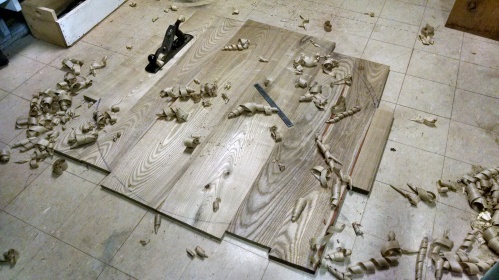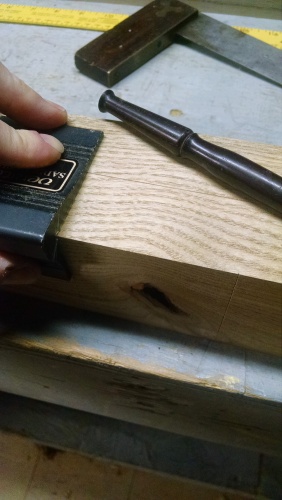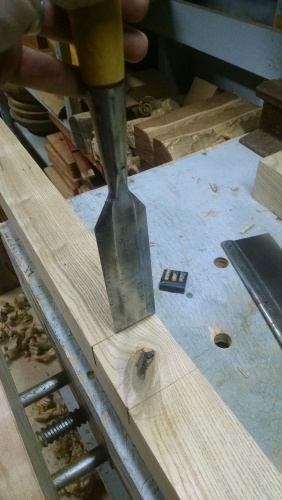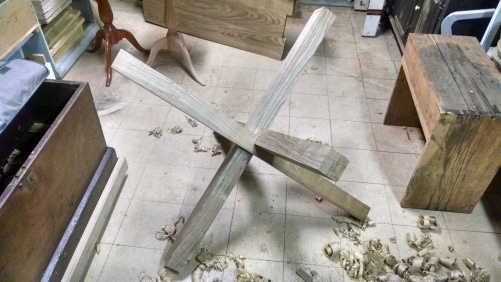Song lyrics were running through my head as I rubbed down the final coat of lacquer on Sunday morning:
Down with the shine, the perfect shine, That poisons the well, and ruins my mind, I get took for a ride every time, Down with the glistening shine.
The Avett Brothers are right. Aerosol lacquer leaves a nearly perfect finish straight from the can, but even the “satin” finish is too shiny for my taste. To tone down that glistening shine, I prefer to rub it out with a green synthetic steel wool (Scotch-Brite) pad. You can use real steel wool, but it’s annoying because it disintegrates and leaves a mess.
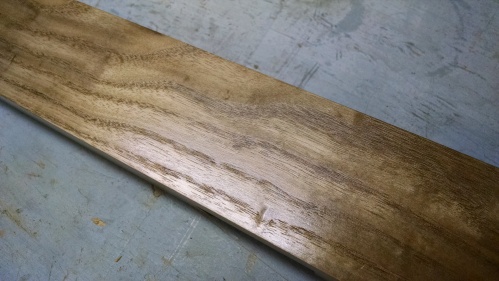

In addition to to reducing the plastic-y look that lacquer can give (not as bad as polyurethane though), rubbing out the finish vastly improves its tactile qualities. The fingers can easily see what your eyes can’t.
Unlike sandpaper, which always needs to be used with the grain when sanding the finish, the Scotch-Brite pad can be rubbed in a circular pattern. If you’re really feeling like a rebel, they attach quite nicely to the Velcro of a random orbit sander.
The final step is a coat of paste wax. I’ve had one can that I’ve been using for at least 8 years, and it’s still not close to halfway gone. Paste wax brings back just a hint of shine, adds a bit of water-proofing, and further improves the smooth, tactile awesomeness of the finish. Rub it on lightly with a cotton rag, let it dry for about 10 minutes, and buff it off with a clean cloth.

The layers of finish will continue to cure and harden for at least a month after the final coat is applied. I try to treat my furniture gingerly for a while after I bring it inside – we’ll see how well that works for a kitchen table in a house with two young kids.
After the paste wax was done, the table was ready leave my shop. Cue the next verse:
It’s in with the new, and out with the old, Out goes the warm, and in comes the cold, It’s the most predictable story told, In with the young, out with the old.
The old table was certainly warm and well-used.

Complete with glitter paint:
And watercolors:
And plenty of dents and dings:
My daughter was actually crying as I disassembled it to store in the attic. Fortunately, her sadness quickly shifted to delight as I brought the new table in and began to set it up. Unlike the old table, which overwhelmed the small space and made it difficult for two people to move around in the kitchen, the new table fits the space perfectly.

When I began the project, I was mostly excited that I had a kitchen table design that would be quick and easy to build so I could move on to other projects. Now that it’s finished, I have to say that I couldn’t be more pleased with the outcome. I think the table looks modern, but not avant-garde. It goes nicely with our motley collection of kitchen chairs. We feel more like a family as we sit around this table, all facing one another and within an arm’s reach, rather than stretched out across a too-big table. It just feels right. And that’s a good feeling.
If you’d like to follow the whole series of posts on designing and building this table, you can click here and start at the bottom.



















